Ripley Entertainment Inc.'s Blog, page 400
July 18, 2017
CARTOON 07-18-2017
July 17, 2017
Experience the Waverly Hills Sanatorium for Yourself
Featured in Ripley's Believe It or Not!

The Waverly Hills Sanatorium is the kind of place nightmares are made of, or so people say…

Welcome to Waverly Hills Sanatorium. CC Aaron Vowels
Located in Louisville, Kentucky, the abandoned hospital opened its doors on July 26 in 1910. It was intended to treat patients suffering from tuberculosis. However, the epidemic spread like wildfire, and the facility had no other choice but to increase the two story building to five. It was reported that each floor was just inundated with infected patients.
Remember, this plague would eat away at your lungs and was utterly contagious. With that said, Waverly decided to quarantine their patients. Death was so common that they even had a body chute. Yes, you can guess what it was used for. About 63,000 patients died because of their disturbing treatment methods. Believe it or not, doctors would insert balloons into the patients’ lungs and inflate them with air to help them breathe. They would even remove ribs and muscle tissue to allow the lungs to expand and let in more oxygen.

The Steam tunnel was used to transport bodies to the bottom of the hill to keep them out of the sights of other patients. CC Aaron Vowels
Around 1943, the number of tuberculosis cases gradually lowered which meant the sanatorium eventually closed in 1962. The few patients that were left were sent to Hazelwood. In 1962, the building reopened and became a nursing home that treated most patients who were handicapped and suffered from dementia; however, in 1982 Woodhaven Geriatric Center closed because of patient neglect. Following in 1983, J. Clifford Todd bought the property to convert into a prison, but the town was not having it. The abandoned building was bought yet again with the intention of morphing into a chapel and creating the tallest statue of Jesus, yes, inspired by Christ the Redeemer in Rio de Janeiro. The total price to create such a place? $12,000,000. Robert Alberhasky, who bought Waverly Hills, was only able to raise $3,000. The project was killed in 1997. Have no fear though; it was sold yet again to Tina and Charlie Mattingly in 2001.

Waverly Hills Sanatorium via Wikipedia Commons
Return
The Mattingly’s have been hosting tours of the property since they purchased it. All proceeds, including the haunted house attraction they have each Halloween, is used for the restoration of the building.

A hallway in the hospital with water on the floor at Waverly Hills Sanatorium. CC Lwp Kommunikáció
The Waverly Hills Sanatorium continues to garner so much attention due to the paranormal manifestations people have claimed to have witnessed and felt. One of the most haunted places? The body chute. People say they see apparitions, shadows that seem to guard and haunt the tunnels, and, specifically, doctors opening and draining their patients.

Patient rooms. CC Aaron Vowels
One of the most famous rooms in the building is 502. It has been said that you can see the ghost of a nurse in uniform telling people to get out of the hospital. Rumor has it that the nurse committed suicide in that room because she was pregnant and not married. Not only do people claim to see a nurse, but apparently there’s a little girl with no eyes who roams the third floor and a boy who plays with a bouncing ball. We know, it kind of sounds like the horror video game, “Silent Hill“, from trying to find the key to room 502 in the Alchemilla Hospital in Silent Hill: Origins, to the little girl Laura in Silent Hill 2.
Did you know?
Waverly Hills sits on a rise eight miles from downtown Louisville.
The building is 180,000 square-feet.
It was placed on the National Register of Historic Places in 1983.
It’s considered to be the most haunted place in the U.S.A.
Source: Experience the Waverly Hills Sanatorium for Yourself
CARTOON 07-17-2017
July 16, 2017
CARTOON 07-16-2017
July 15, 2017
CARTOON 07-15-2017
July 14, 2017
The World’s Most Famous Conjoined Twins, Chang and Eng Bunker
Featured in Ripley's Believe It or Not!

Cool Stuff, Strange Things
Hosted by Ripley’s lead researcher, Sabrina Sieck, let Ripley’s Believe It or Not! introduce YOU to the coolest stuff and strangest things.
Today: Chang and Eng
Chang And Eng Bunker
Overcoming all medical odds and societal scoffs—leaving their home in the East to be poked by doctors and pointed at by spectators in the West—Chang and Eng Bunker made the best of their unique condition. Inspiring the term “Siamese Twins,” Chang and Eng are the world’s most famous conjoined twins.
Taken from Bangkok to America
Born in 1811 in a fishing village 60 miles from Bangkok, the twins had their roots more in China than in Siam. From birth, their sternums were connected by a small piece of cartilage, but, believe it or not, the rest of their systems operated completely independently from one another. So, even though their livers were fused, one could be wasted while the other was stone cold sober—which is a good thing since Chang’s weakness was boozing. They both had their vices. Eng was known to go on a gambling benders, playing poker all night long.
From a young age, their mother encouraged them to exercise, stretching their connecting tissue so that it gradually measured more than five inches—allowing the boys to have a little more wiggle room. Although very individual (Chang was always a little shorter), the twins had inseparable experiences.
This story would have never been told if it weren’t for Scottish merchant, Robert Hunter, who spotted the boys swimming. He realized their potential as a sideshow attraction in the West and paid their parents to take the 18-year-old brothers away as human oddities. They toured for 10 years, eventually ending their contract with Hunter and managing themselves for a time, before settling down and enjoying life as Southern gentlemen—plantation and all.

Settling Down and Siring 21 Children
That “and all” leads to romance. Chang and Eng began pursuing a pair of farmer’s daughters next door. It was an unusual courtship. Chang and the so-called “more attractive” sister, Adelaide, fell in love, while Eng and her sister, Sarah, were lukewarm. It took Sarah five years to agree to marry Eng, and both couples tied the knot in 1843.
This wedding stirred up scandal! People considered it “bestial”—a foursome at the very least. I mean, they all slept in an enlarged and strengthened marital bed built for four— Chang and Eng in the middle flanked their wives on either side. Chang and Eng never publicly discussed this private matter, but to put it in perspective, the couples both gave birth to their first children only six days apart. Chang and Eng went on to father 21 children in all.

Return to Showbiz and Death of Chang
With the end of the Civil War, came financial ruin for the Bunkers. They went back to the sideshow but had little success this time. Often taking their children on the road with them, the Bunker’s were forced to come face to face with those who viewed their completely natural desire to pursue a normal family life as a devilish abomination.
Chang began drinking heavily, often leaving his sober brother to care for the drunken man attached to him. While Eng was healthy, Chang’s health deteriorated, and during a bout of bronchitis, he passed away in his sleep. Awaking to find his dead brother attached to him, Eng panicked. A doctor was called to remove the dead brother, but Chang announced he was going too and died shortly after.
You can check out Chang and Eng themselves at the Mutter Museum in Philadelphia, Pennsylvania, where the brother’s bodies were cast after examination—an exam that revealed the twins would have had ZERO chance of surviving a separation.
Share & Subscribe
If you liked the show, please share it with your peeps. Remember to SUBSCRIBE to our channel to stay BION-informed!

Source: The World’s Most Famous Conjoined Twins, Chang and Eng Bunker
CARTOON 07-14-2017
July 13, 2017
CARTOON 07-13-2017
July 12, 2017
The Reconstruction of Nebiri, an Ancient Egyptian Dignitary
Featured in Ripley's Believe It or Not!

The 3,500-year-old Egyptian noble, Nebiri, has recently been resurrected using modern forensics. The Ancient Egyptian dignitary lived during the 18th Dynasty under the reign of Pharaoh Thutmoses III.
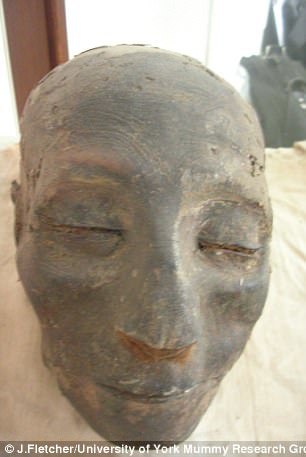
Nebiri CC J. Fletcher
Embalming
Nebiri was uncovered by Italian Egyptologist Ernesto Schiaparelli in the Valley of the Queens in Luxor around 1904, but his looted tomb only contained his mummified head and several jars stuffed with his organs.
As we know, embalming was a common practice for the Egyptians; however, his mummified head came with a little extra packing. From animal fat to coniferous tree resin, it looks like all the natural antibacterials that were found in his skull were imported, as the plants used were not native to the region.
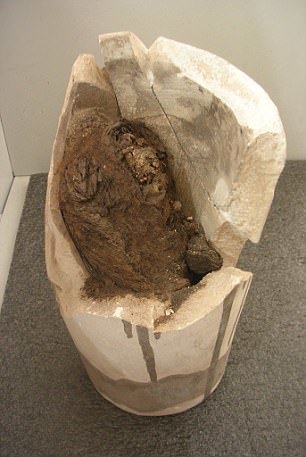
Nebiri’s lungs CC J. Fletcher
This type of Embalming was found in King Tut’s great-grandparents, Yuya and Thuya. This emphasizes that Nebiri was indeed a high elite.
3D Reconstruction
Thanks to anthropological research and computer rendering, scientists have been able to reconstruct the Egyptian’s face. Believe it or not, researchers can tell a person’s age by the thickness of their tissues. It ultimately allowed them to shape the face by precisely knowing the distance between his bones and skin.
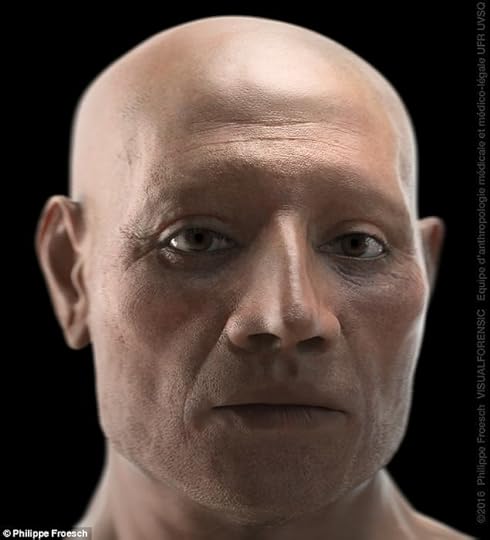
CC Philippe Froesch
Just two years ago, the same team who worked on the reconstruction of Nebiri’s face was able to tell that he suffered from cardiovascular disease. He had atherosclerosis in the right carotid artery and suffered from gum disease. After scanning the lungs that were found in one of the jars, it showed aggregates of cells that are normally seen in patients who suffer from heart failure.
Did you know?
During the US Civil War, embalming became an imperative need for deceased soldiers’ long journeys home.
Underneath a 14th-century French convent are five well-preserved embalmed human hearts.
Embalming took place at the residence of the deceased because it became popular in the 19th century.
Embalming is different from taxidermy, where you only preserve the skin.
Canopic jars, otherwise known as vessels, carried organs that were washed and wrapped in linen strips.
Source: The Reconstruction of Nebiri, an Ancient Egyptian Dignitary
Stunning Photos of Women’s Uniforms from World War II
Featured in Ripley's Believe It or Not!
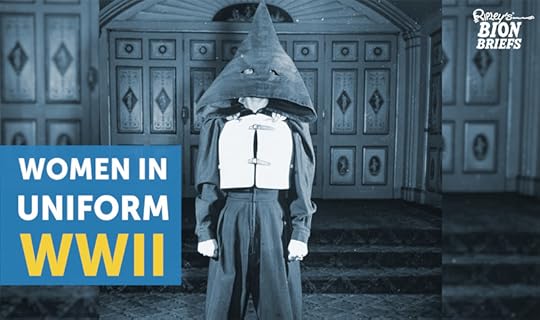
Believe it or not, 400,000 women in the US donned military uniforms during World War II. Though they were not allowed to serve combat roles, they made a significant impact on the War. Allied forces in Australia, Canada, and the United Kingdom even formed female branches of the military, enabling women to serve.
Most women served in industrial, clerical, communications, healthcare, and transportation roles, but some women acted as scientists, tacticians, soldiers, and spies.

Lyudmila Pavlichenko, a female Russian sniper credited with over 300 kills.
Requirements
Though standard requirements varied from country to country, all had basic physical specifications. Women had already fought hard to break into the labor force, but as women became more independent, several countries had women’s auxiliary forces forming at home.
Women’s Royal Canadian Naval Service (WRENS) Requirements
Between the ages of 18 and 41.
Must be healthy.
Must be at least 5 feet tall and of appropriate weight for their height.
Must have at least entered high school.
Must be able to pass a trades test.
Be of good character with no record of conviction for an indictable offense.
The Home Front
While the “home front” is usually used to refer to a place removed from war, the British homefront was becoming a battlefield as well. As more and more men went off to fight, women took up jobs defending their homes as searchlight operators and anti-aircraft gunners. Queen Elizabeth (this was before she was queen) even served as an ambulance driver.
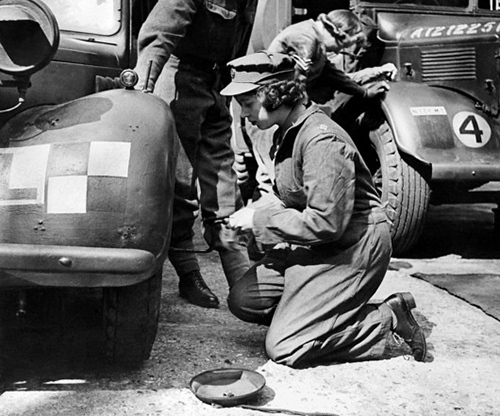
Queen (to be) Elizabeth changing a tire in training.
Women had to meet the same requirements as men, go through the same training, and live in the same conditions. Despite this, they were not paid the same as their male counterparts. Women proved to be very skilled at deciphering aerial photographs. They helped immensely in planning the D-Day invasion.
Uniforms
Women’s uniforms varied between country and job. An enlisted woman was typically issued a uniform that included everything but undergarments (they were issued a stipend for those).
The uniforms covered everything from drivers and nurses to snipers and ski patrols.

Source: Stunning Photos of Women’s Uniforms from World War II
Ripley Entertainment Inc.'s Blog
- Ripley Entertainment Inc.'s profile
- 52 followers










